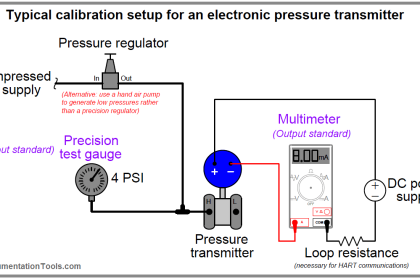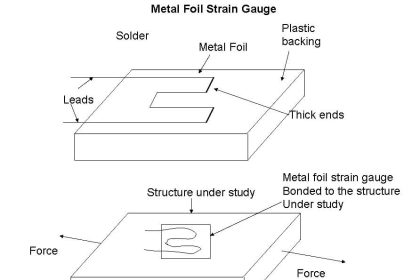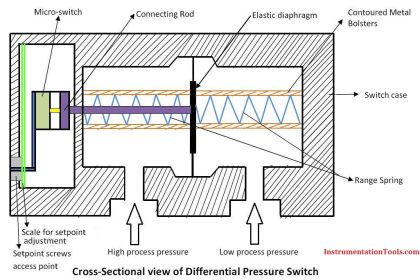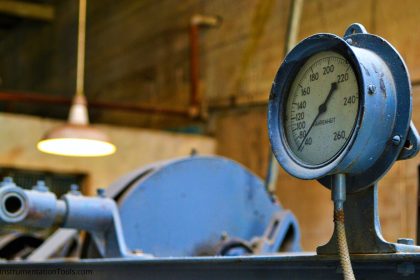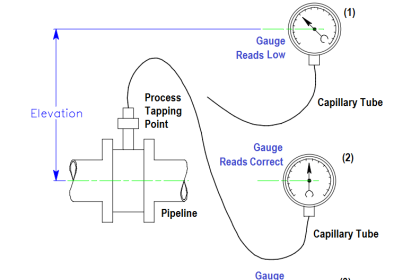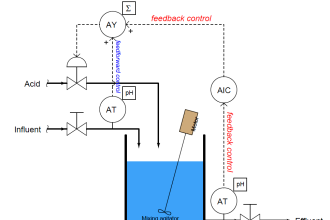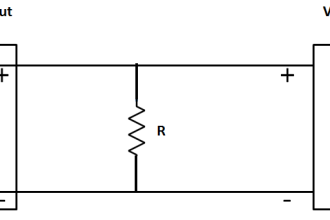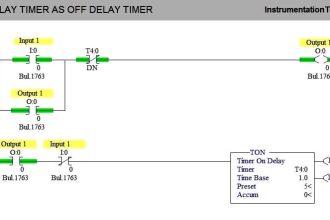This article cover calibration of Magnehelic Gauge (Differential Pressure Gauge) using a Digital Manometer.
Magnehelic Gauge or Differential Pressure Gauge has two ports – High and Low.
As name suggest Differential Pressure Gauge i.e. its measure Pressure difference between High port and Low port.
Generally, units of Differential pressure Gauge are mmWC, Pascal, Mbar, Inch WC, PSI, mmHg
High Port is also called as Positive port and Low port is called as Negative port.
How to calculate differential pressure?
Pressure at high port is 100 Pascal and Pressure at low port is 75 Pascal.
Differential Pressure indicated by Magnehelic Gauge or Differential Pressure Gauge is 100-75= 25 Pascal,
Differential Pressure= High Port – Low Port
If pressure at Low Port is higher than Low Port, than indicator will show Negative readings.
Magnehelic Gauge Calibration
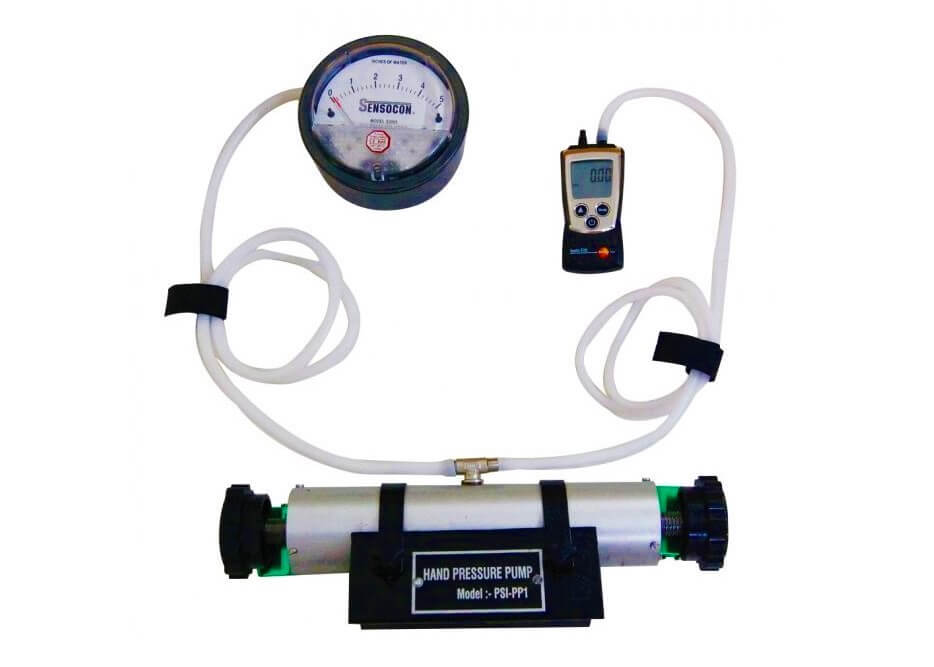
Analog Magnehelic Gauge should be in Vertical position.
Generally, Magnehelic Gauge is installed above the door, input ports with a hose are located at the back and front of the gauge. So opening the door will equalize the ambient pressure and the Magnehelic gauge will turn back to zero (as both rooms are at equal pressure, High port – Low Port = 0)
Connect the pneumatic pump on the High Port of the Magnehelic Gauge. Leave the Low Port open to ambient, in this way, the differential pressure gauge functions as a normal pressure gauge.
You can also connect Low Port to know Pressure and find the difference between High and low port.
The calibration Procedure from this step is the same as the Pressure Gauge. I.e. Preloading, UP Cycle, Down Cycle.
Equally distribute calibration points into 5 points (0%, 25%, 50 %, 75% and 100%)
Pre Loading – Increase Pressure up to full scale & decrease it to zero of UUC, to make pointer movement free.
We should wait at least 30 seconds to note the readings of Magnehelic Gauge. The waiting time for the upper limit of the measuring range is 2 minutes.
Up-Cycle is measured from Minimum pressure range to Maximum Pressure Range
Down-Cycle is measured from Maximum pressure range to Minimum Pressure Range
Up-Cycle Calibration
- Increase Pressure by operating the pump to set the calibration point on the UUC gauge.
- When pointer of UUC Gauge reach first calibration point note down both UUC & standard reading. Wait for 30 seconds to note down reading. Wait for 2 Minutes for upper limit of measuring range.
- Slowly increase the pressure to set next set point .Write down reading Standard reading & UUC reading.
- Repeat this procedure for remaining calibration points.
- This completes Up cycle of calibration of Magnehelic Gauge
Down-Cycle Calibration
- For Down Cycle, Last calibration point of Up Cycle is first point of Down Cycle.
- Slowly decrease the pressure to set the next set point. Write down reading Standard reading & UUC reading. Wait for 30 seconds to note down reading. Wait for 2 Minutes for the upper limit of the measuring range.
- Repeat this procedure for remaining calibration points.
- This completes the Down Cycle of calibration of Magnehelic Gauge
If you liked this article, then please subscribe to our YouTube Channel for Instrumentation, Electrical, PLC, and SCADA video tutorials.
You can also follow us on Facebook and Twitter to receive daily updates.
Read Next:
